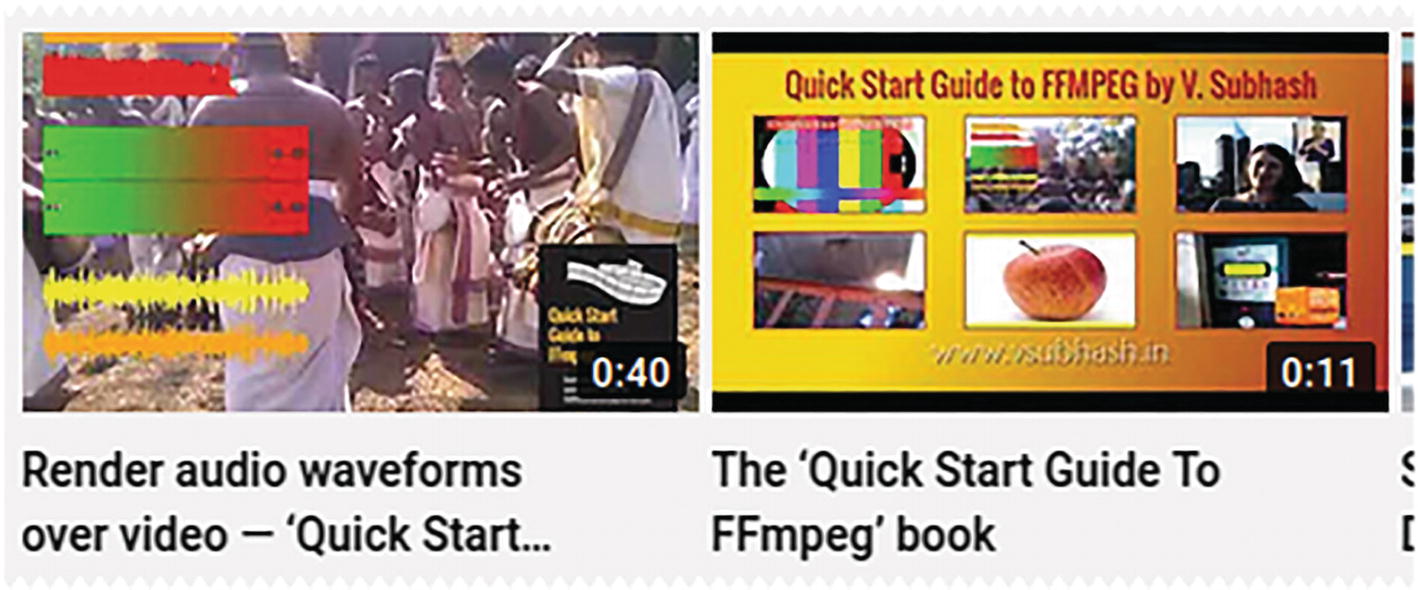V. Subhash - Quick Start Guide to FFmpeg: Learn to Use the Open Source Multimedia-Processing Tool like a Pro
Here you can read online V. Subhash - Quick Start Guide to FFmpeg: Learn to Use the Open Source Multimedia-Processing Tool like a Pro full text of the book (entire story) in english for free. Download pdf and epub, get meaning, cover and reviews about this ebook. City: Berkeley, CA, year: 2023, publisher: Apress, genre: Computer / Art. Description of the work, (preface) as well as reviews are available. Best literature library LitArk.com created for fans of good reading and offers a wide selection of genres:
Romance novel
Science fiction
Adventure
Detective
Science
History
Home and family
Prose
Art
Politics
Computer
Non-fiction
Religion
Business
Children
Humor
Choose a favorite category and find really read worthwhile books. Enjoy immersion in the world of imagination, feel the emotions of the characters or learn something new for yourself, make an fascinating discovery.
Quick Start Guide to FFmpeg: Learn to Use the Open Source Multimedia-Processing Tool like a Pro: summary, description and annotation
We offer to read an annotation, description, summary or preface (depends on what the author of the book "Quick Start Guide to FFmpeg: Learn to Use the Open Source Multimedia-Processing Tool like a Pro" wrote himself). If you haven't found the necessary information about the book — write in the comments, we will try to find it.
Create, edit, modify and convert multimedia files using FFmpeg, the most versatile open source audio and video processing tool available for Linux, Mac and Windows users. After reading this book, you will be able to work with video and audio files, images, text, animations, fonts, subtitles and metadata like a pro.
It begins with a simple introduction to FFmpeg executables ffmpeg, ffprobe and ffplay, and explains how you can use them to process multimedia containers, streams, audio channels, maps and metadata. It then describes how you can easily edit, enhance and convert audio, video, image and text files. There are dedicated chapters for filters, audio, subtitles and metadata, as well as FFmpeg tips and tricks. Sample lists of FFmpeg filters, encoders, decoders, formats and codecs are also available as appendices.
Quick Start Guide to FFmpeg is for anyone who needs to edit or process multimedia files including studio professionals, broadcast personnel, content creators, podcasters, librarians, archivists and webmasters. It will be indispensable for those wanting to process a variety of multimedia files from the command line and inside shell scripts or custom-built software.
You Will Learn To:
- Convert from one format to another e.g. video-to-video, video-to-audio, video-to-image, image-to-video, video-to-animation, animation-to-video, text-to-audio, text-to-video
- Edit video files by cutting them with and without re-encoding, appending, resizing, changing frame rate and aspect ratio, mixing in audio
- Use filters to rotate, flip, crop, overlay (side-by-side or inset), remove logos, blur, smooth and sharpen, apply transitions as well as speed up or down playback
- Edit audio files by changing, normalizing or compressing volume, mixing and splitting channels and detecting silence. Also, learn to generate waveforms as video or images
- Add subtitles, place them anywhere on the screen, use custom fonts and colors, and use different languages
- Learn how to import, export and remove metadata, add MP3 tags (including album art), set global and stream-specific metadata, export and remove metadata
Content creators and bloggers from professional studio employees to Youtubers and hobbyists who need to process their own multimedia content; multimedia archivists and librarians; regular Linux desktop users
V. Subhash: author's other books
Who wrote Quick Start Guide to FFmpeg: Learn to Use the Open Source Multimedia-Processing Tool like a Pro? Find out the surname, the name of the author of the book and a list of all author's works by series.

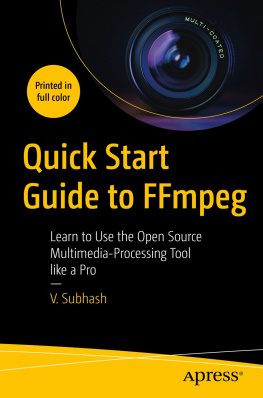


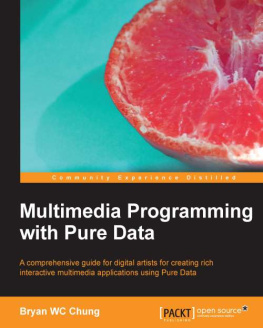

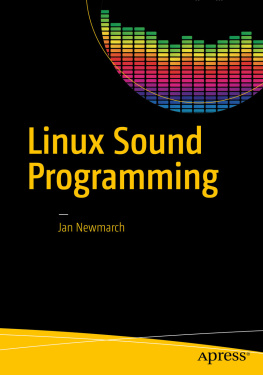




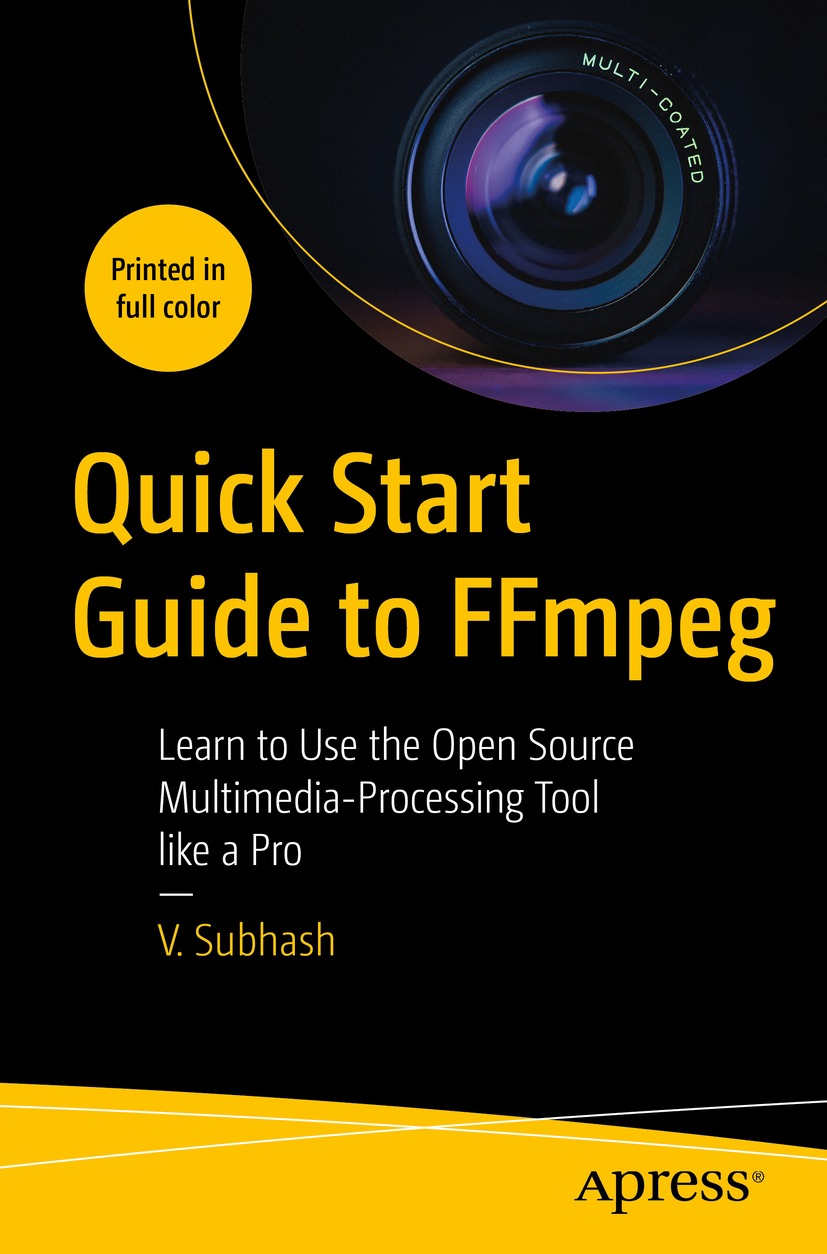

 A photo of V. Subhash.
A photo of V. Subhash.